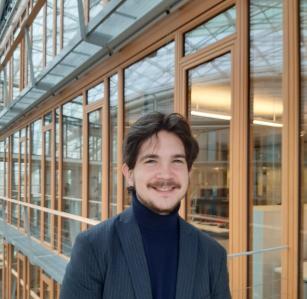In the 1970s, professor Józef Piotrowski started looking for the best material for sensing applications. At the Warsaw Technical Military Academy, he made a scientific breakthrough that would help transform the world of infrared technology.
Piotrowski and his team developed detectors that no longer require cooling with liquid nitrogen—a feat that made these detectors more practical and versatile, and opened up a world of new applications. This innovation also set the stage for the founding of VIGO Photonics in 1987, a company that has since specialised in producing instruments for photonics (light-wave technology) and microelectronics.

Today, led by Adam Piotrowski, Jozef’s son, VIGO Photonics wants to continue its tradition of innovation with a new initiative called HyperPic. This project seeks to integrate lasers and photonic detectors into a single, tiny chip, fundamentally changing the way we interact with everyday devices.
“Imagine a smartwatch that not only tracks your steps but also monitors your blood glucose levels in real-time, or a refrigerator that alerts you when your food is about to spoil,” says Filip Costa, Vigo’s corporate finance director. “These are just a few of the applications that HyperPic will have in consumer electronics, environmental protection, medicine, and more.”
The European Investment Bank is supporting VIGO Photonics with €21 million in venture debt, signed in September 2024. This financing aims to ensure that Europe remains at the forefront of photonics innovation.
- Read more about two European companies that are producing innovative digital services in Poland Lithuania
Detecting the invisible
We encounter light every day, yet it wasn't until the twentieth century that its mysteries began to unfold with the study of photonics, the science and technology dedicated to generating, controlling, and detecting light. This field studies the light we can see and the light just beyond our vision, known as infrared.
The study of the infrared spectrum helps us detect and analyse the composition of various materials with great effectiveness. This feat is made possible by infrared detectors, which are sophisticated devices that enable us to identify and process even the most subtle variations in infrared wavelengths. Their high sensitivity makes them perfect for fast and accurate measurements, setting them apart from other type of detectors.

VIGO Photonics
VIGO Photonics specialises in infrared detectors, complete infrared detection modules, and epitaxial wafers—products designed to capture and process infrared signals. The company is now seeking to integrate these components into a fingertip-sized chip, known as a photonic integrated circuit. These circuits represent the next big advance in the sector, with significant applications for everyday and household devices. Their compact size enables complex tests to be conducted easily and conveniently, eliminating the need for a full laboratory.
"This could have applications in a wide range of fields,” says Costa, the director of corporate finance at the company, “from environmental monitoring and protection, like tracking greenhouse gases and industrial contaminations, to monitoring air and water quality in public buildings and private homes, and even advancing digital health monitoring through breath analysis, glucose monitoring, and detecting intoxicants in blood and sweat.”
Supporting Europe’s digital sovereignty
Photonics can boost innovation across an increasing number of fields and provides new and unique solutions where traditional technologies are reaching their limits in speed, capacity, and accuracy.
Investment in photonics is vital for boosting European digital autonomy. That is why the European Investment Bank is supporting VIGO. "It is about retaining high-tech capabilities within the European Union, and it’s encouraging to see such innovation thriving in a city like Warsaw," says Andres Etzel Gavira, a lead engineer who specialises in digital infrastructure at the European Investment Bank.
The EU financing will help VIGO Photonics improve the performance of its detectors and modules and advance research and development for new detectors.
“There is a gap in the Central European market to finance highly innovative, risky but disruptive technologies that may revolutionise whole industries and affect the global economy in the long run,” says Philippe Hoett, the senior venture debt loan officer at the European Investment Bank who led the financing for Vigo Photonics.
- Read more about a Swedish company developing solar cells that allow electronic devices to become self-powered
European photonic technology
The potential impact of the HyperPIC project extends far beyond VIGO Photonics. By leading this initiative, the company intends to create a ripple effect throughout the entire European photonics industry.
“The HyperPIC project is expected to unlock a plethora of applications currently constrained by bulky technology,” says Costa.

Vigo Photonics
HyperPIC aims also to serve as a model for collaboration in Europe, fostering scientific breakthroughs and strengthening ties with key players in the photonics industry and research community. The project is carried out in partnership with leading companies such as ams Osram and TRUMPF Photonic Components, supported by renowned academic institutions, including Eindhoven University of Technology, Tyndall National Institute, Politecnico di Milano, Warsaw University of Technology, Universitat Politècnica de València, and the Łukasiewicz Institute of Microelectronics and Photonics.
PROJECT RED (I-EU TI)
The project relates to the promoter-s activities in R&D of new photonic -electronic integration (PIC) technology as well as Infrared (IR) detectors and modules. The project also includes the expenditures in the R&D related Capex.

